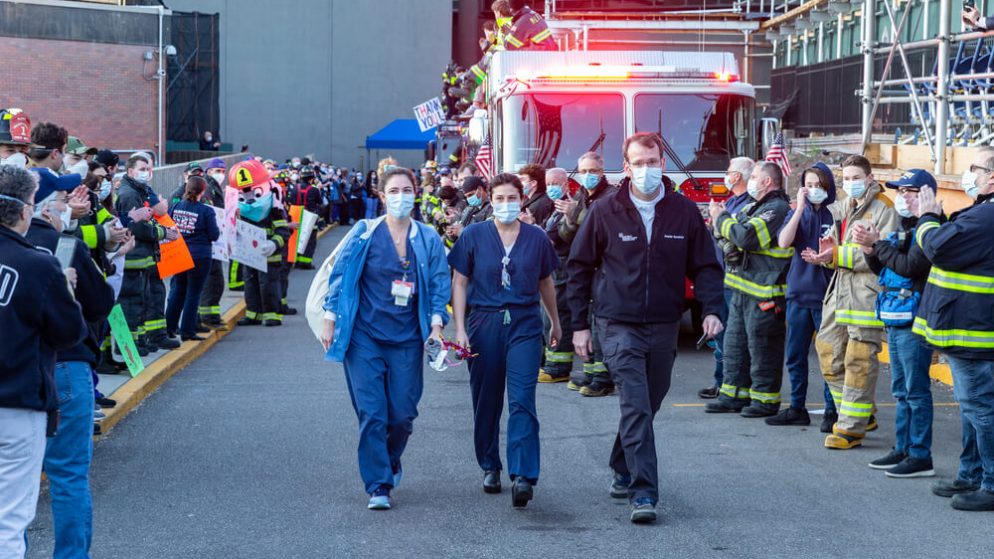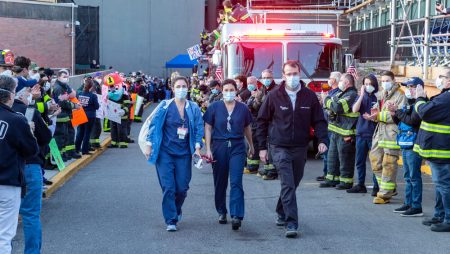



Get new exclusive access to healthcare business reports & breaking news




Public safety officials and lawmakers nationwide are adopting new methods to help police officers and healthcare professionals respond to mental health emergencies
By Karin Marquez, Senior Director of Public Safety of RapidSOS
The United States is in the midst of a mental health crisis. And this crisis becomes even more exaggerated when analyzing the outcomes of mental health emergencies.
First responders need proper training on how to identify and descale behavioral health episodes, as well as greater access to real-time data about individuals at the scene of an incident. In addition to the location of a subject, physical descriptors including what someone is wearing, how tall they are etc., officers should also be made aware of any physical and/or psychological conditions a person has in order to properly approach the situation. But that type of information can be harder to gather.
To improve outcomes in the emergency response process, federal and state governments have enacted new laws and also have several bills in the works to provide first responders with real-time incident data during mental health calls. Technology companies are playing a huge role in these efforts, working hand in hand with public safety officials to develop smarter ways to respond to emergencies. RapidSOS, for example, is an emergency response data platform that securely links life-saving data from over 350 million connected devices and platforms to emergency services and first responders; protecting 300 million people—over 94% of the total U.S. population.
This article will explore why there is a gap in resources for mental health crises, how the local and federal officials are trying to improve interactions between first responders and individuals with behavioral health disorders, and the technology being developed to enable safer interactions.
Today, nearly one in five Americans are living with a mental illness. The prevalence of diseases such as anxiety and depression has been exacerbated during the pandemic, but even before social distancing and mandated business closures, mental health issues were on the rise throughout the country.
Between 2017-18, 60% of youth with major depression did not receive any mental health treatment, and 24% of adults with a mental illness reported an unmet need for treatment—this number has not declined since 2011. But even those that do seek proper treatment may find few options for care.
In the latter half of the 20th century, many psychiatric hospitals were forced to close their doors due to inhumane conditions. While these institutions were shuttered, few were developed in their place to provide proper care for the mentally ill. Between hospital bed shortages and lack of access, the police have become the go-to point of contact for mental health emergencies, and jails and prisons the new institutions for individuals suffering behavioral health episodes.
Consider: In 2017, police nationwide spent around 20% of their time responding to mental health calls, leaving officers tied up with emergencies they are not necessarily well equipped to handle.
While there is a clear gap in the resources for first responders dealing with mental health emergencies, public officials have started the process of reforming current systems and implementing technology that offers real-time incident data for officers and medical personnel.
Federal and state governments are now taking action to overhaul the mental health emergency response system with new policies and resources for law enforcement and public safety officials.
During a mental health episode, it is critical to send the proper professionals to the scene once an incident is reported. Improving outcomes to mental health calls and providing a more appropriate response starts with the information 9-1-1 telecommunicators receive and relay.
That is why the Federal Communications Commission created a national 9-8-8 number for mental health crises. Dialing 9-8-8 as opposed to 9-1-1 activates a non-police response, and several states have already introduced several bills to adopt the new system. The anticipated date of implementation nationwide is summer of 2022.
The $1.9 trillion American Rescue Plan Act of 2021 also contains several provisions to help jurisdictions with mental health initiatives. The law improves services and introduces reforms to the current emergency response system with $3.5 billion block grants, aimed at addressing mental health issues. This includes $20 million for an education campaign that will teach first responders and medical professionals mental illness prevention and identification tactics.
At the state level, places like Virginia, Illinois and Pennsylvania are passing their own legislation to divert 9-1-1 calls related to mental health issues to more appropriate crisis centers, with the goal of improving the outcomes of emergencies that involve people experiencing a behavioral health crisis. And at least 34 states already require officers to complete courses and training on how to interact with individuals with mental illness.
Last year, Virginia Governor Ralph Northam signed the ‘Marcus Alert’ bill into law, which outlines a statewide mental health alert system, ensuring medical experts are included in emergency calls related to mental health crises. Every locality in Virginia is now required to establish a voluntary database made available to the 9-1-1 system, which includes mental health and emergency contact information of emergency callers to first responders.
To provide first responders with better information during an emergency, public safety officials have started to partner with tech companies to provide officers with real-time incident data.
Tech companies are also providing proactive tools for first responders to de-escalate a behavioral health episode. This is what RapidSOS’s partnership with the Vitals Profile911 app aims to accomplish by allowing users to share critical medical information as well as de-escalation tools directly with 9-1-1 during an emergency.
Another example of tech companies providing life-saving data is the Emergency Health Profile, which was created during the Covid-19 pandemic last April by RapidSOS, the American Heart Association, American Red Cross and Direct Relief. The free opt-in online profile allows citizens to voluntarily upload personal health information securely online, which can include behavioral disorders, blood type, Covid-19 status, medications, medical conditions and emergency contacts. The data is associated with an individual’s phone number and only shared when a 9-1-1 call is placed from the associated number. Then, the information is subsequently deleted from the 9-1-1 system once the emergency is over.
Several Virginia agencies have adopted and recommended the Emergency Health Profiles solution as part of the state’s aforementioned Marcus Alert legislation. Residents can create a free digital health profile through emergencyprofile.org that paramedics and other emergency personnel can access during a 9-1-1 emergency call.
One Virginia-based lieutenant said, “This service is another opportunity to assist those in the community that may need additional resources. Having a coordinated response alongside our mental health professionals is paramount.”
By knowing an individual’s existing health conditions, law enforcement, EMTs and doctors can be more proactive in their approach to handling an emergency. Technology like the Emergency Health Profile can transform the nation’s emergency response systems, but these programs will need continued public and government support.
We need to continue to find innovative solutions to improve our emergency response systems. Luckily, we have the power to enact positive change by implementing smart technology that helps first responders gain access to the critical health information they need to make informed decisions.